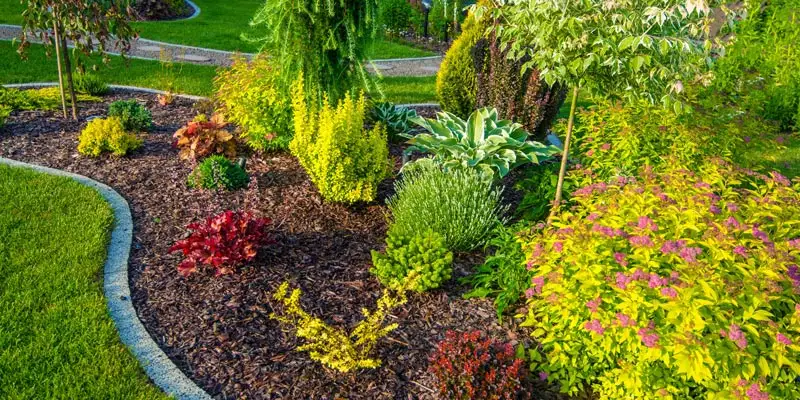The Ultimate Guide To Landscape Design
The Ultimate Guide To Landscape Design
Blog Article
Some Known Questions About Landscape Design.
Table of ContentsThe 5-Minute Rule for Landscape DesignAbout Landscape DesignIndicators on Landscape Design You Need To KnowThe 2-Minute Rule for Landscape Design
A backyard can typically be divided into 3 locations: public (the front lawn), private (the back yard), and solution (generally the side lawn). The area of activity areas depends mainly on the kind of area, the size of room required, the kind of activity, and the desired proximity to other activities and structures.
The outside wall surface of the home usually functions as the very first wall surface or starting point of an outside room. Inappropriate usages ought to be separated, and relevant tasks, such as food preparation and eating, must be placed together to make the yard much more effective and enjoyable. When making use of hardscape to develop rooms, utilize building and construction material comparable to that used in your home for connection from your house right into the yard.
Connected spaces. Credit: Gail Hansen, UF/IFAS Using similar hardscape functions and repeating plants draws the eye around the garden.
This provides a feeling of mystery that advertises exploration and discovery of the landscape. From a style viewpoint, plant materials have 3 major features in the landscape: visual, architectural and practical. Aesthetically, plants produce an aesthetically positive atmosphere and structurally plants arrange and specify areas. Plants are practical due to the fact that they can transform the environment for the comfort of the individual by changing light, temperature level and humidity.
Landscape Design - Questions
For psychological comfort plants are used as physical or suggested obstacles for personal privacy and safety. Physical obstacles block both the sight and accessibility to an area and consist of fences, wall surfaces and plant hedges.
Physical and suggested obstacles. Credit Rating: Gail Hansen, UF/IFAS For these reasons, the sorts of plants to be made use of (such as trees, hedges, or groundcovers) need to be chosen in the onset of planning. Plant types are chosen for their useful capacities so that their future purpose and required room can be thought about at the very same time.
The overhead aircraft, the vertical aircraft and the ground aircraft need to all be taken into consideration to produce enclosure. When the form of a plant bed has been established, the plants ought to be massed (organized) and layered to attain aesthetic unity and the desired quantity of enclosure. The dimension of a plant mass will depend upon the overall size of the backyard, the dimension of the specific plants in the mass, and the emphasis or effect preferred important site from the plant material.
Each plant mass is in front of, behind, or following to, another mass. Credit: Gail Hansen, UF/IFAS Repeating plants within a mass and duplicating masses with comparable plants connects the garden with each other. The specific plant features have to be considered to efficiently layer and mass plants.
An Unbiased View of Landscape Design
All plant structures start with the primary structure plants, the huge, primarily evergreen history plants-such as the trees and big bushes. These plants separate or enframe spaces, manage the size of the area, and supply the starting point for selecting the suitable characteristics of the 2nd layer, midground plants, for massing and infill.
Important points in the garden ought to be highlighted by the usage of distinct plants, distinctive structures, or yard ornaments. Noting limits or entryways to rooms can be done with entrances, arbors, and steps, or via making use of unique and colorful plants. The form and/or style theme of the yard will commonly aid establish the vital factors and just how they ought to be highlighted.
Other important areas in the backyard are focal points, which is made use of to aesthetically arrange a designed area. The kind of centerpiece usually depends on the viewing point of view. Different point of views or viewpoints can disclose various make-ups in the landscape that may call for a variety of focal factors. Contrasting texture, shape, dimension and shade will certainly capture and hold the eye.
10 Simple Techniques For Landscape Design
Number 13. Plant kinds. Credit Rating: Gail Hansen, UF/IFAS After form, imp source appearance is the following leading function of a plant; crude, medium and fine textures can be made use of for contrast and emphasis in the landscape. Form and texture both trump color in the garden for many of the year. Nevertheless, throughout particular periods, color check my blog will be one of the most visible characteristic of the yard.


The pleasant fragrance of plants, the sound of wind in the trees, the audio and structure of water, and the colors and appearances of sculptures, pots and yard furniture all contribute to the experience of the garden. One information that is frequently forgotten is the impact of light on the looks of the plants.
The entire yard changes in function and look throughout the day, and the course of a year, as the light and temperature modification from morning to night and season to season. Plant selection have to take into consideration a plant's development rate, its fully grown size and type, and the maintenance it will certainly require.
It is very important to recognize the eventual mature dimension of plants so they can be placed in the right area and spaced appropriately when they are installed. Giving plants area to expand is an obstacle since the typical fully grown size is usually based on optimal growing conditions and the ecological conditions of a website may cause a plant to grow bigger or stay smaller sized.
Report this page